Champions of Content – Q&A with Jonathan Symcox, Editor at BusinessCloud & TechBlast
Welcome to the latest entry in our series: Champions of Content
Content is integral to the way brands are understood and seen by their audiences, but developing content for different audiences, on different channels and even in different languages can be very complicated to get right.
In Champions of Content, we’ll be speaking to passionate content creators we admire including marketers, journalists, writers, podcasters, and speakers about their experiences and sharing the wisdom to help others on their own content journey – whether your first putting pen to paper or looking to level up your content strategy.
We spoke to Jonathan Symcox, Editor at BusinessCloud and TechBlast on creating a diverse range of content throughout his career from interviews, to features, webinars, breaking news and more. Looking back at his experience as a former Eurosport and Daily Mirror journalist, he shares his views on what makes a good story, the need for variety of content to be offered on the menu and reveals his secret sauce for content success!
Please can you begin by telling us about your own career journey as it relates to content and what role content plays in your work today?
I started out as a web journalist at Eurosport, diving headfirst into the 2006 World Cup in Germany. One Saturday evening I was in charge of live comments for the 3rd place playoff between Germany and Portugal, writing the breaking match report at the final whistle followed by the full report, as well as covering website news for everything from winter sports to tennis, cycling, athletics and more. I was a one-person show after more than a month of heavy coverage while the rest of the team took a day off. Needless to say, it was a long shift!
No smartphones or even Twitter back then. It was my introduction to the value of content: daily features relating to the tournament; TV packages with former footballers, live coverage of every game, and on-the-ground reporting in Germany. It all showed me that a good match report was more than just a retelling of the action on the pitch: it was about the context. Like when Wayne Rooney got sent off against Portugal – a huge story in itself – but the fact that Cristiano Ronaldo winked at the bench after calling for the red card was a whole different ball game! Would they play together for Manchester United again?
After many great years helping to build Eurosport and the Yahoo! UK sports website, I craved a new challenge and found it at the Daily Mirror, leading news teams, writing copy, and leading another team which translated the evolving newspaper content planned to the website. Here, the newspaper splashes and exclusives were key, especially when the story was huge; you also had the columns – for example, John Prescott accusing Israel of war crimes in Gaza and the West Bank, which was read by several million people; and a wide range of news stories, from human interest to court cases, double-page feature spreads, celebrity news and sport. Juggling the publication of 50+ news stories in a shift was a challenge! Looking at the performance of content in real-time taught me the value of a good headline – grabbing attention while including keywords for SEO – but never at the expense of misleading the reader. No clickbait!
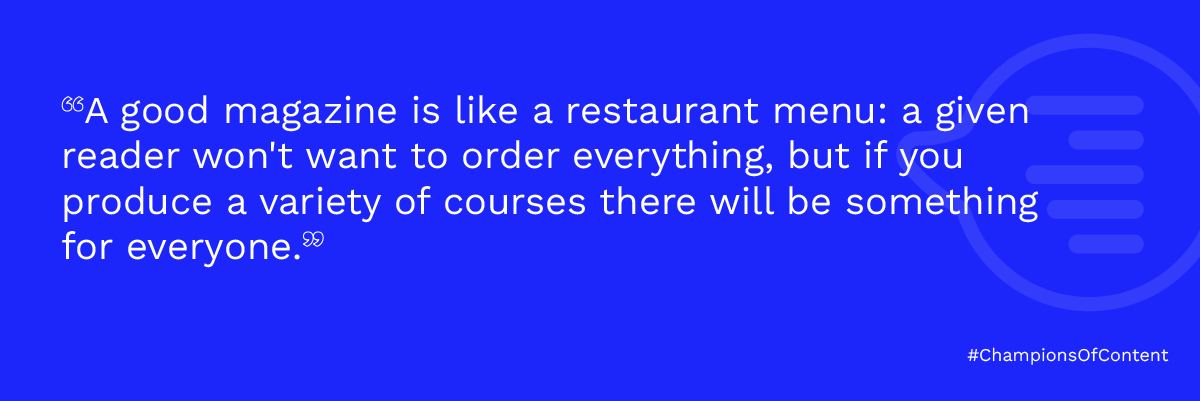
My greatest learning experience, however, came when I built BusinessCloud from the ground-up. Over 20 editions of our 80-page magazine, filled with interviews, reports and features across all types of technology covering regions across the UK. A good magazine is like a restaurant menu: a given reader won’t want to order everything, but if you produce a variety of courses there will be something for everyone. However, what never changes is the need to make the interviewee or subject relatable: set the scene, highlight the human angle and tell the honest story behind how a business was built. And – as they say – a picture is worth a thousand words! COVID then whittled our 20,000 circulation down to a few thousand and we took the decision to go fully digital.
We had also built up a dedicated following for our website, daily email newsletters and created events – fully organic – which delivered news and views from the tech sector. With the magazine laid to rest, we launched our second brand and website TechBlast to really focus on advice for growing a company. When we interview someone, the story on BusinessCloud.co.uk may cover the tech, the growth and the plans for the future, but the version on TechBlast.co.uk dives into the founder’s advice: for example, how running ultra marathons helped their leadership style, or our ‘Message to my younger self’ feature where entrepreneurs explain how they would do things differently if they had their time again.
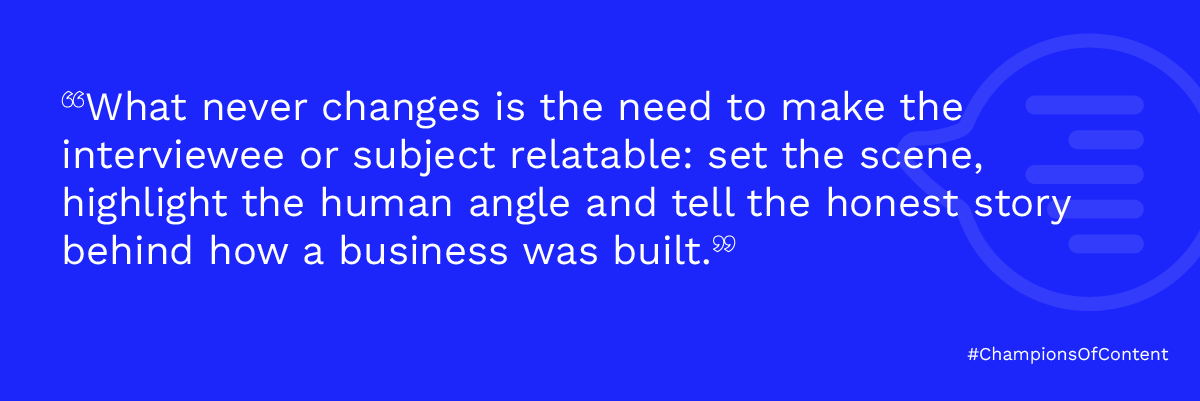
Whose content (brands or individuals) do you admire most and why?
For me, The Guardian and BBC are the bastions of quality journalism in the UK. They are often attacked by the ‘right’ for being too left-leaning, but speaking honestly, those hurling such accusations often harbor more of an agenda than the outlets they target. The Guardian should be admired for its investigations over the years: for example, its ongoing exposure of how Michelle Mone used her political connections to secure lucrative PPE contracts during COVID then lied to the media about her involvement. It has come to light how lawyers instructed by Mone threatened media outlets – including The Guardian’s David Conn, who led the way with the story – with legal action in an attempt to prevent them from reporting on the story; indeed, she once threatened BusinessCloud with legal action after we reported on a failed cryptocurrency she launched with husband Doug Barrowman. Investigations by the likes of the Financial Times should also be lauded. My executive editor and BusinessCloud Publishing co-owner, Chris Maguire, has investigated individuals and businesses on our end and it is one of the most difficult and time-consuming pieces of content to pull together! Meanwhile, the BBC’s commitment to neutrality under bombardment in this age of reactionary politics should also be admired.
We all want our content to stand out, what do you think are the main ingredients that make one piece of content stand out above another?
When I interview for BusinessCloud and TechBlast, my goal is to give readers a full picture of the business and interviewee: Who are they? What motivates them? Where did the business come from? How has it developed along the way: was there a pivot? (There almost always is). What size are they now? What are their goals and plans for the future? What have they learned? And what can they pass on to others?
Above all, aim for simplicity. Read The Old Man and the Sea (or anything else Ernest Hemingway wrote!). To tell a story, move a reader and leave a lasting impression, you don’t need huge paragraphs bursting with adjectives and conjunctions. Just tell it how it is. Short, sharp sentences that strike at the heart of the matter.
Having said that, I love a semi-colon!
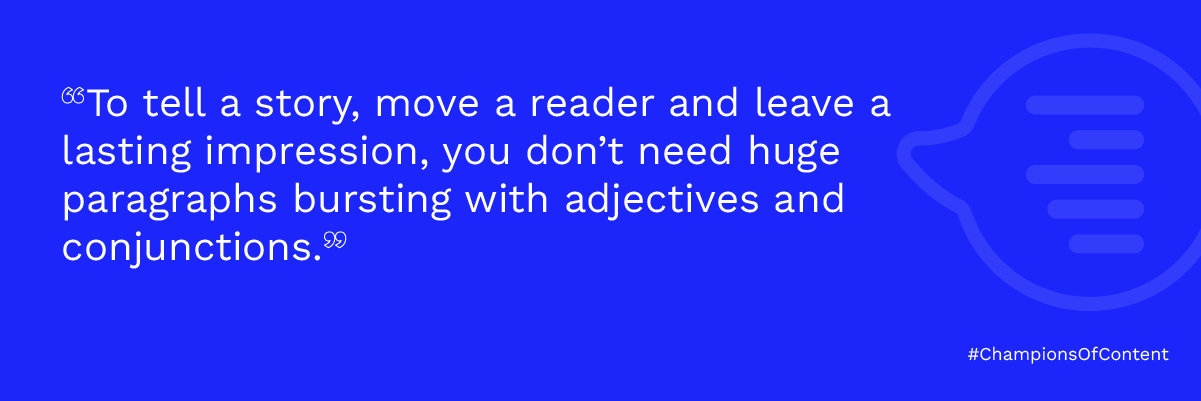
What are some of the challenges you face when producing content for different channels and audiences, and how do you deal with these? Here at Tyto, we often navigate the complexity of developing content for different audiences in different countries.
In the past, we repurposed magazine interviews into bite-sized, digestible content for our online audience – much like a Mirror newspaper investigation might be split into several pieces for that website. Nowadays, the main split is between BusinessCloud and TechBlast. The former tells the story of the business and technology; the latter offers personal learnings and advice.
Most of our audience is in the UK, followed by the US. Fortunately, there’s no significant language or comprehension barrier between American and UK readers when it comes to the language of business, technology and entrepreneurship.
Are you excited by AI and ChatGPT, and if so where do you see the greatest potential to harness it in the development of content, now or in the future?
I’m excited about the prospect of working smarter i.e. where can it save us time from a business point of view. Although, automation plays more of a role in that than generative text.
I once used ChatGPT to write a news story as a test, and while it was OK, it fabricated a quote from the CEO! The type of content ChatGPT writes reads as filler – the kind of fluff you might read in a poor press release about a tech firm, where the platform is described in eight different ways and the reader is sent to sleep. Many press releases are functional, and there’s nothing wrong with that – a company raising funding does not need a deep dive into the founder’s hopes and dreams; that’s the purpose of the interview feature but you often don’t need more than 10 paragraphs to tell that tale. I’d rather write that myself than ask a bot to draft and redraft and redraft again – and still have concerns over the accuracy. It wasn’t much better when I asked it to write an event brief and agenda – very generic.
When it comes to in-depth content, I think the human touch is too important: providing that lens for the reader to view the business, entrepreneur, politician, celebrity or sports star will always set it apart – when done well – and in theory, offer much-needed balance.
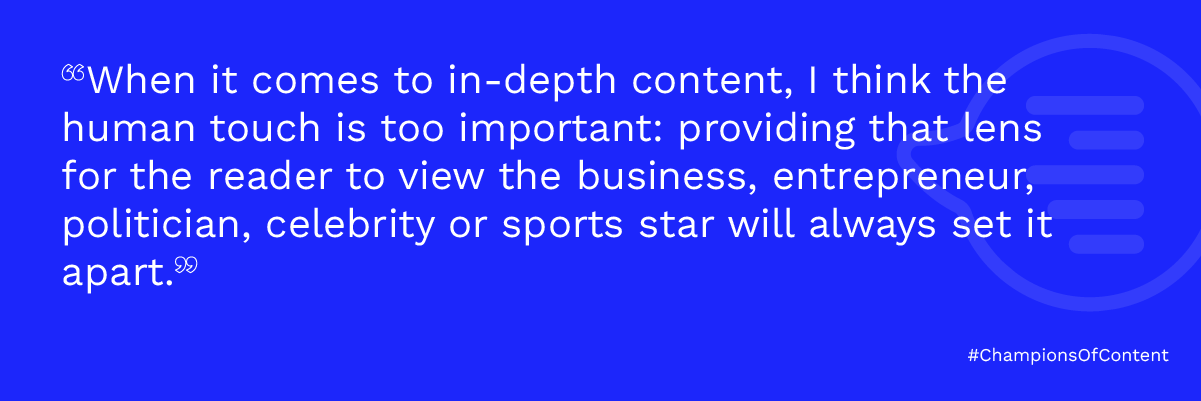
For brands or individuals planning to level up their content in 2024, what would be your top three bits of advice for how they can increase the impact of their content? What should they be thinking about and looking at? What are you thinking about?
Is it interesting to your target audience? Does it provide insight? Does the headline and intro do it justice and provide a fair reflection of the content overall?
Do you have a variety of content to pique the interest of a range of readers? (There’s that restaurant menu again…) For example, we have news, insights, reports, interviews, webinar/podcasts produced expertly by our valued partner Tyto, and features. These are presented in specific spots and ways on our newsletters to make them stand out.
Partnerships and social media are key. Just expecting people to find your content without promoting it is a recipe for frustration. Sometimes you cannot predict what will fly, but if you don’t give it the best chance through newsletters, LinkedIn posts and other means, you’ll never grow your audience. We launched LinkedIn newsletters a year ago and now have thousands of subscribers there.
And finally, how do you measure the success of your content?
I try not to look at the stats on a daily basis, but rather weekly and, in more detail, monthly.
You have to adapt to your customers; but what is the criteria you are using there? If it is page views alone, I know I could double our monthly traffic by focusing mostly on stories around cryptocurrency and football clubs. Years ago I used the headline ‘Acronis to bolster Arsenal defence’ – it was a clever one and did the trick as thousands of people clicked on the story in the first hour. However, they were mainly Gunners fans wanting to find out about this new Greek centre-half, only to realise it was a cybersecurity deal! Not only would they have left disappointed, but they wouldn’t have remained on the website and, just as crucial, they weren’t our target audience. They came through the NewsNow aggregator. So understand who your audience is; what they want; and deliver something which is a little different from other outlets in your space.
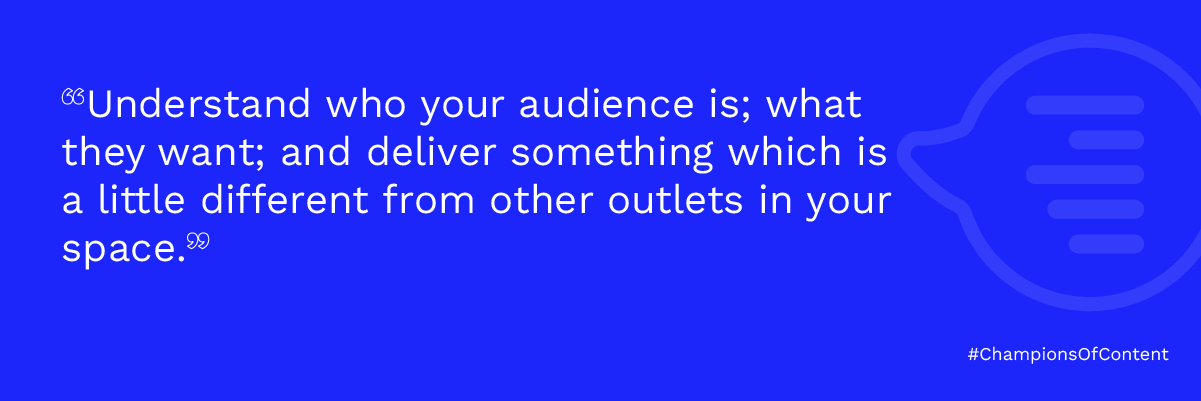
And we would never neglect to cover a story because we don’t think a company is of sufficient size and lacks a public profile. Many companies we covered years ago are now major players but still willing to pick up the phone to us – for example, Peak founder/CEO Richard Potter and Playdemic founder, Paul Gouge, spoke at our FUEL Manchester event to offer tales of growing pains and ultimate success to the next generation of entrepreneurs. And therein lies our secret sauce!











